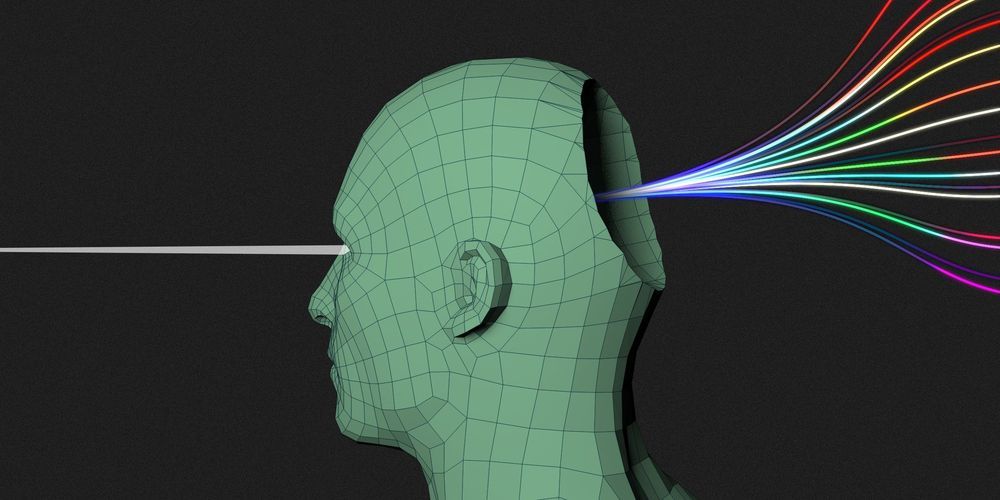Page 8854
May 10, 2019
Blue Moon: Here’s How Blue Origin’s New Lunar Lander Works
Posted by Genevieve Klien in category: space travel
May 10, 2019
The Challenge of Building a Self-Driving Car
Posted by Gerard Bain in categories: engineering, robotics/AI, transportation

Be one of the first 500 people to sign up with this link and get 20% off your subscription with Brilliant.org! https://brilliant.org/realengineering/
New vlog channel: https://www.youtube.com/channel/UCMet4qY3027v8KjpaDtDx-g
Continue reading “The Challenge of Building a Self-Driving Car” »
May 10, 2019
Get your head in the game: World’s 1st VR gym opens in San Francisco (VIDEO)
Posted by Carse Peel in categories: computing, entertainment, virtual reality

The world’s first virtual reality gym just opened in San Francisco, offering a next-generation workout via a computer games-based distraction technique that aims to put the fun back into exercising.
Black Box VR promises a gym experience like no other by giving users a full-body workout while virtually immersed in another world that requires them to fight battles and beat their opponent.
Continue reading “Get your head in the game: World’s 1st VR gym opens in San Francisco (VIDEO)” »
May 10, 2019
How the Videogame Aesthetic Flows Into All of Culture
Posted by Genevieve Klien in categories: computing, media & arts
Videogames show us how digital media in general lend themselves easily to flow. For flow experiences often depend on repetitive actions, which contribute to the feeling of engagement and absorption that Csikszentmihalyi describes, and videogames—like all interactive computer interfaces, indeed like virtually all computer programs—operate on the principle of repetition. The user becomes part of the event loop that drives the action: her inputs to the controller, mouse, or keyboard are processed each time the computer executes the loop and are displayed as actions on the screen. The user not only experiences flow, she actually becomes part of the program’s flow. This is true, if in different ways, for applications throughout digital culture, such as YouTube, Facebook, and Twitter.
The most prominent and popular social media platforms appeal to their hundreds of millions of users in part through the mechanism of flow. The stereotype, which contains some grain of truth, is that flow culture is youth culture. Young people spend their days immersed in flows of text messages, tweets, Facebook posts, and streaming music, while older adults prefer to experience their media one at a time. For example, a Pew Research survey from 2012 showed that almost half of all adults between ages 18 and 34 use Twitter, whereas only 13 percent of adults over age 55 do. The younger you are, the more likely you are to multitask: those born after 1980 do so more than Generation X, which does so much more than the baby boomers.
Each of the genres of social media provides a different flow experience. YouTube, for example, remediates television and video for the World Wide Web. A typical YouTube session begins with one video, which the user may have found through searching or as a link sent to her. The page that displays that video contains links to others, established through various associations: the same subject, the same contributor, a similar theme, and so on. Channel surfing on traditional television can be addictive, but the content of one channel tends to have little to do with that of the next. YouTube’s lists of links and its invitation to search for new videos give the viewer’s experience more continuity, with the opportunity to watch an endless series of close variants.
Continue reading “How the Videogame Aesthetic Flows Into All of Culture” »
May 10, 2019
How scorpion venom is helping surgeons detect brain cancer
Posted by Genevieve Klien in categories: biotech/medical, neuroscience
A new imaging technique designed to help surgeons identify the location of malignant brain tumors during surgery is showing promising early clinical trial results. The technique combines a new high-sensitivity near-infrared camera with a special imaging agent synthesized from an amino acid found in scorpion venom.
May 10, 2019
SpaceX to launch dozens of ‘test satellites’ for its Starlink program
Posted by Carse Peel in categories: internet, satellites

SpaceX will launch dozens of ‘test satellites’ for its Starlink program next week as it ramps up efforts to create high speed global internet…
According to Gwynne Shotwell, SpaceX’s president and CEO, the company will launch dozens of satellites next week as a demonstration for project Starlink.
Continue reading “SpaceX to launch dozens of ‘test satellites’ for its Starlink program” »
May 10, 2019
One-off injection may drastically reduce heart attack risk
Posted by Genevieve Klien in categories: biotech/medical, genetics
Doctors in the US have announced plans for a radical gene therapy that aims to drastically reduce the risk of heart attack, the world’s leading cause of death, with a one-off injection.
The researchers hope to trial the therapy within the next three years in people with a rare genetic disorder that makes them prone to heart attacks in their 30s and 40s. If the treatment proves safe and effective in the patients, doctors will seek approval to offer the jab to a wider population.
“The therapy will be relevant, we think, to any adult at risk of a heart attack,” said Sekar Kathiresan, a cardiologist and geneticist at Harvard Medical School who will lead the effort. “We want this not only for people who have heart attacks at a young age because of a genetic disorder, but for garden variety heart attacks as well.”
Continue reading “One-off injection may drastically reduce heart attack risk” »
May 10, 2019
Jeff Bezos’s huge ambitions for space include floating colonies with weather like ‘Maui on its best day, all year long’
Posted by Quinn Sena in category: space
Bezos has discussed his hope of building O’Neill colonies, spinning cylinders in space that would replicate gravity and sustain human life.
May 10, 2019
MIT CSAIL’s AI can predict the onset of breast cancer 5 years in advance
Posted by Quinn Sena in categories: biotech/medical, robotics/AI
Scientists at MIT’s CSAIL and Massachusetts General Hospital have developed an AI model that can predict breast cancer up to five years in advance.















